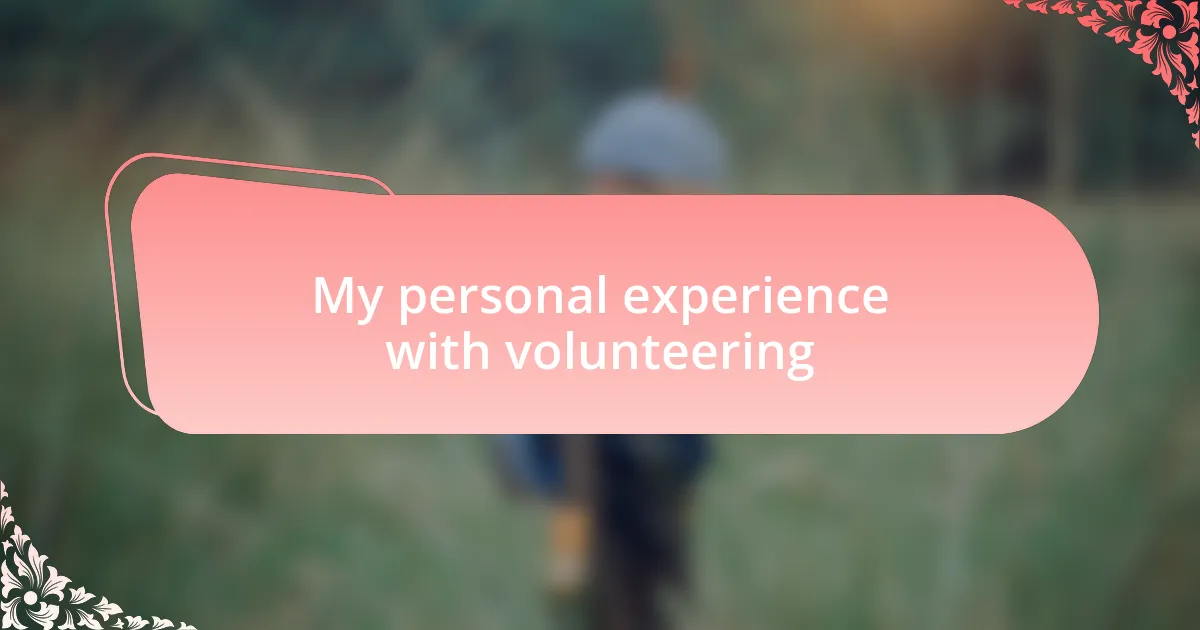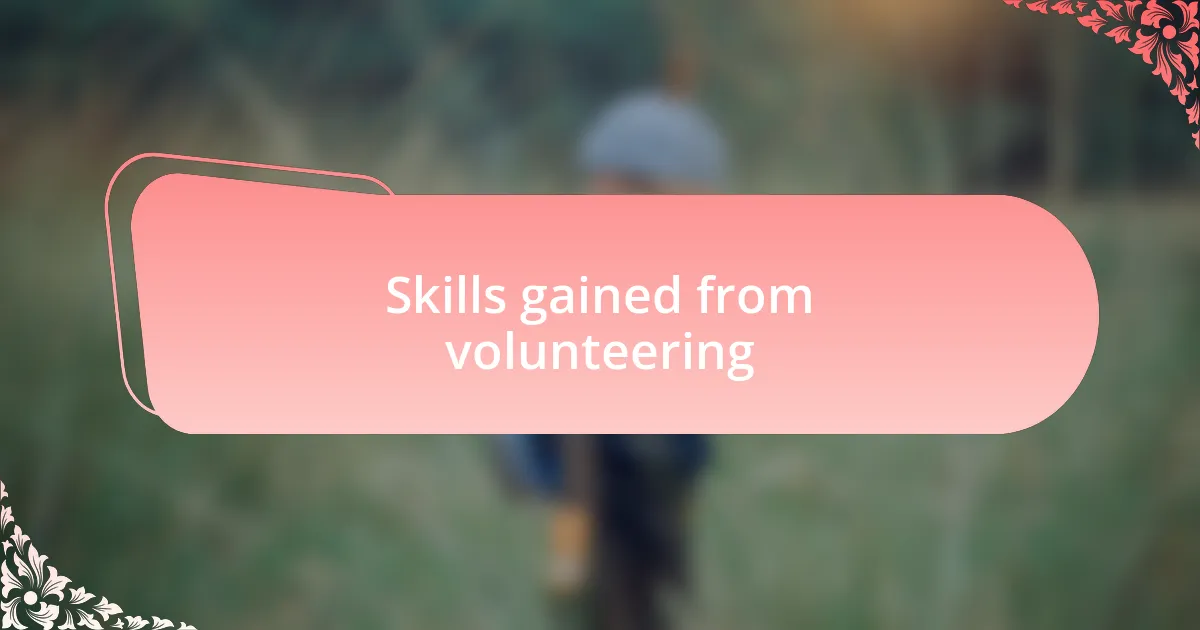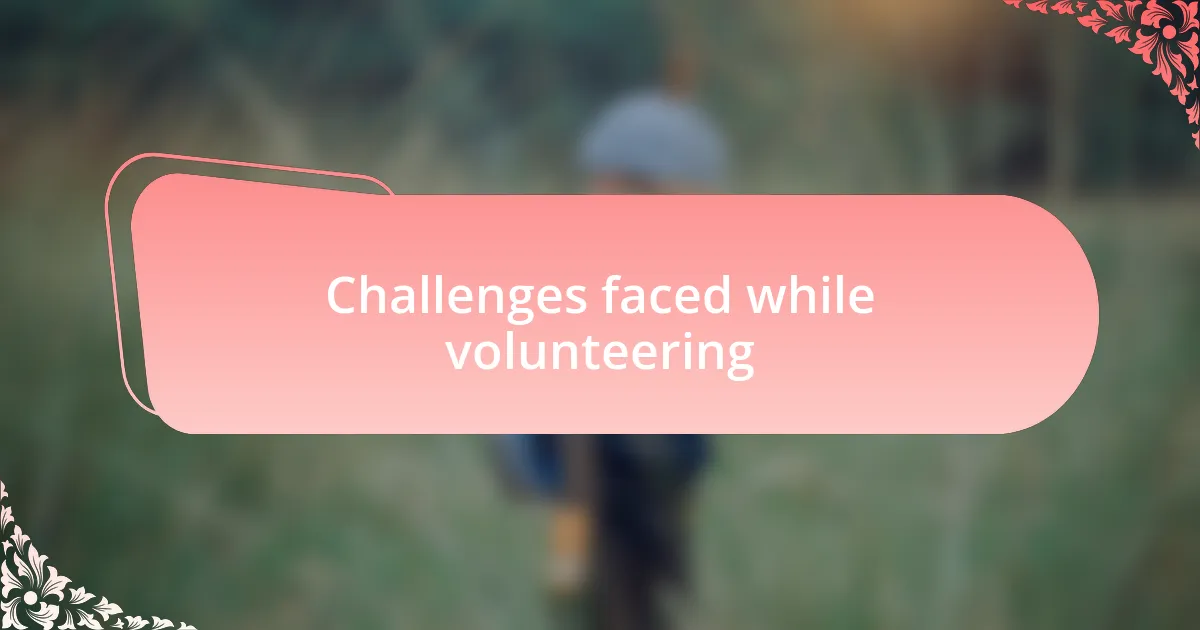Key takeaways:
- Child health support must address emotional and psychological health, as they are integral to overall physical wellbeing.
- Volunteering revealed the importance of safe spaces for children to express emotions, fostering joy and connection.
- Active listening and adaptability were key skills developed, enhancing communication and understanding of children’s needs.
- Challenges included managing emotional weight from children’s stories, building trust, and navigating limited resources for support.

Understanding child health support
Child health support is essential because it encompasses not just physical wellbeing, but emotional and psychological health as well. I remember a time when I volunteered at a local mental health clinic for children. It was eye-opening to see how a child’s mental state can profoundly influence their physical health and overall development.
Engaging with kids during my volunteer work, I often wondered: how can we better address the mental health needs of our youngest community members? When I witnessed a child blossom after receiving tailored support, it reinforced my belief that understanding and addressing mental health is a crucial part of comprehensive child health support.
Moreover, effective child health support requires collaboration among families, schools, and healthcare providers. I recall working alongside a teacher who was deeply committed to recognizing the signs of stress in her students. It reminded me that when we work together, we create a safer and more nurturing environment for children, allowing them to thrive both emotionally and physically.

My personal experience with volunteering
Volunteering at the mental health clinic opened my eyes to the nuances of childhood emotional struggles. I specifically remember a young boy who initially resisted our sessions, clinging to his silence as if it were a protective shield. Over time, as he began to express himself through art, it struck me just how vital it is for kids to have a safe space to communicate their feelings.
One day, I organized a group activity where the children could share stories about their favorite memories. Witnessing their laughter and camaraderie made me realize how powerful connection can be. I often think, how many children out there feel isolated in their emotions? This experience highlighted for me that joy and connection are essential components of mental health support.
I also encountered a heartwarming moment with a girl who was afraid to voice her worries. After weeks of gradual encouragement, she finally opened up and shared her fears about school. It was a reminder that sometimes the smallest victories are the most significant. Looking back, I wonder: how can we create more opportunities for children to feel empowered to share their thoughts? This continues to fuel my passion for fostering environments where children feel secure enough to share, learn, and grow.

Skills gained from volunteering
One of the most valuable skills I developed through volunteering in mental health was active listening. There was this little girl who would often speak in whispers, afraid to articulate her thoughts. As I leaned in closer, focused solely on her words, I realized that creating an environment where children feel truly heard is transformative. How often do we give our full attention to someone? This practice opened my eyes to the importance of presence in communication.
Additionally, I honed my ability to adapt my communication style to meet the needs of the children I served. During one session, I instinctively changed my approach when I noticed a child withdrawing. By engaging him through a puppet show instead of asking questions directly, I unlocked a pathway to his imagination. It made me think: how crucial is it for us to tailor our interactions to help others express themselves? This adaptability became a key part of my skillset, enhancing my understanding of diverse communication needs.
Critical thinking also emerged as a key skill during my time volunteering. I often found myself navigating complex situations—like when a child reacted negatively to a group exercise. Instead of viewing it as a setback, I analyzed the moment to find alternative ways to connect with her. It’s fascinating how these challenges spark innovative thinking. How can we redefine our approach to reach those who struggle? This experience taught me that problem-solving and creativity go hand in hand when supporting children’s mental health.

Challenges faced while volunteering
Volunteering in mental health is deeply rewarding, but it comes with its challenges. One obstacle I frequently encountered was the emotional weight of the stories shared by the children. There was a moment when a young boy disclosed his feelings of abandonment, and it struck me like a thunderbolt. How do we carry these heavy emotions without letting them overshadow our purpose? I learned that self-care is essential, providing me with the resilience to support others while acknowledging my emotional responses.
Another challenge was navigating the varying levels of trust among the children. I vividly recall a situation where a child refused to engage during group activities, visibly anxious and withdrawn. This left me pondering: what barriers prevent children from opening up? Building trust takes time, and I quickly realized the importance of patience and consistency. It wasn’t just a matter of encouraging participation; it required me to earn their trust through small yet meaningful interactions.
Lastly, limited resources often posed difficulties in delivering the most effective support. I remember organizing an art therapy session with just a handful of supplies, striving to maximize their impact. This made me think—how can we create meaningful experiences even when the deck feels stacked against us? It challenged my creativity and resourcefulness, showing me that sometimes, the simplest engagements can resonate the most with children in need.